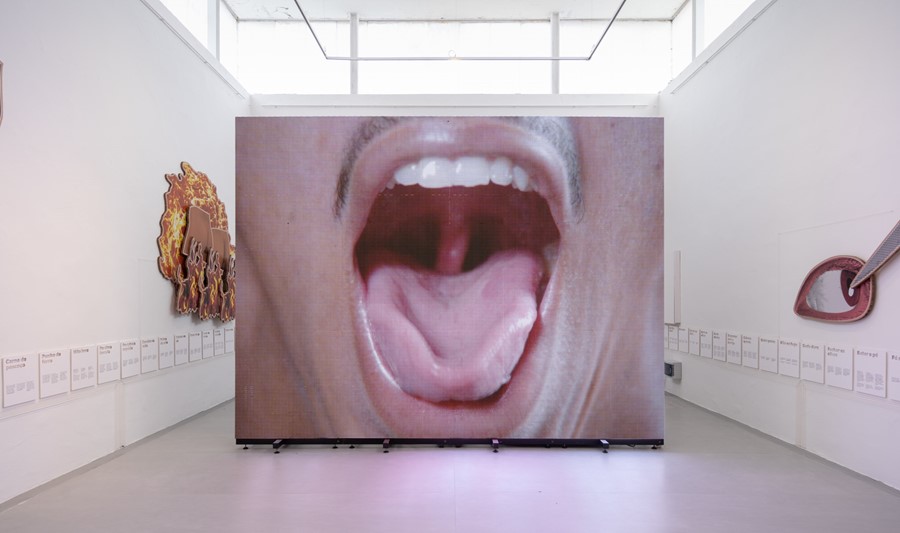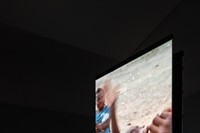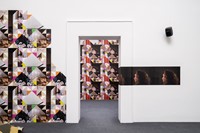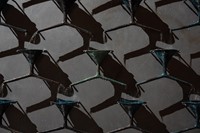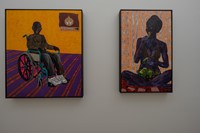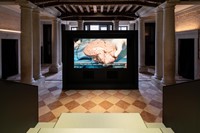From Simone Leigh’s stark, self-assured sculptures to a show exploring neuroscience at Fondazione Prada’s Venice palazzo – here are the highlights from the Venice Biennale
Artistic director of the 59th International Art Exhibition at this year’s Venice Biennale, Cecilia Alemani (who previously curated New York City’s High Line), presented a historic exhibition filling the 300-year-old shipyard, armouries and public park with 90 per cent of works by female artists. “For the first 100 years of this prestigious institution, the percentage of women artists in the show was less than ten per cent, and in the last 20 years, it was around 30 per cent”, Alemani told Art Newspaper as the biennale launched. The impact of this decision is enormous – a never-before-seen gesture that appears to rewrite history as one wanders its halls.
The rafters seem to swing with the very best of female artists old and new (the show is dedicated to the work of under-celebrated American surrealist Leonora Carrington, taking one of her books’ titles The Milk of Dreams), with boundary-breaking icons like Paula Rego, Barbara Kruger, Hannah Höch, Sonia Delaunay, Nan Goldin, Niki de Saint Phalle, Rebecca Horn and Sophie Taeuber-Arp alongside new-gen powerhouses like Thảo Nguyên Phan, Sondra Perry and Candice Lin. Alemani’s bolstering mood had a ripple effect that pervaded the national pavilions and awards too (though neither were under her control), with two Black women (Simone Leigh for the US and Sonia Boyce for the UK) winning respective Golden Lion awards.
It’s a monumental moment in art history, but as ever, the biennale is eternally huge and overwhelming – here, we give you a breakdown of the must-see marvels for a whistlestop tour.
Simone Leigh
Sculptor Simone Leigh won the Golden Lion for best participant in The Milk of Dreams (her totemic statue Brick House, a 16-foot bronze of an eyeless Black female figure opened Alemani’s exhibition in the main hall of the Arsenale) but it is Sovereignty, her commission for the US pavilion over in the biennale’s other site, the Giardini, that is particularly astounding. Inside, Leigh’s large-scale sculptural works commingle history, Guinea ritual, the female body and early Black American material culture. Elegantly stark and arresting, her ceramic and bronze works – a washer woman, or a towering, grass-skirted cowrie shell – are impeccable and poignant. Outside, the neo-Palladian 1930s structure this year boasts a shaggy thatched roof and wooden support beams and Satellite, a 24-foot bronze female form with a concave disc for a head. It’s one of the most self-assured displays you’ll see at this year’s biennale.
Francis Alÿs
At the Belgian pavilion, there’s The Nature of the Game – a selection of films from Alÿs’ ongoing Children’s Games series; documentations of children playing games in locations spanning Hong Kong, the Democratic Republic of Congo, Belgium and Mexico, and offering the viewer an abundant feeling of both universality and joy.

Sonia Boyce
Boyce won the Golden Lion prize for Best National Participation, for Feeling Her Way, on show at the UK pavilion. The installation houses video works featuring five Black women musicians of different generations – Poppy Ajudha, Jacqui Dankworth, Sofia Jernberg, Tanita Tikaram and composer Errollyn Wallen – who improvise, interact and play with their voices. Curated together, the women sing in an exuberant cacophony, exploring what it means to express themselves freely, and looking at the notion that to experience such visual play can create new encounters. The setting, with golden geode structures and fan-girl posters and graphic print-making, is jubilant.
Precious Okoyomon
Precious Okoyomon’s To See the Earth Before the End of the World closes the main tunnel of art that is the Arsenale. Alongside a booming soundtrack, Okoyomon’s living garden reverberates with the steady spread of the Japanese Kudzu plant – an invasive perennial vine that was introduced to the US before becoming invasive and then quickly made illegal. Okoyomon’s garden will continue to grow throughout the seven months of the biennale, and so deserves multiple visits – a living, breathing work of art, literally.
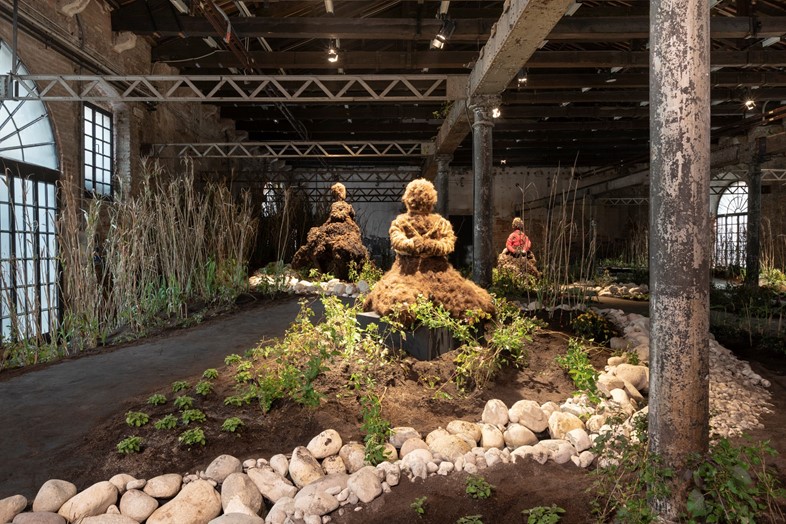
Human Brains: It Begins with an Idea
At Fondazione Prada’s Venice palazzo on Ca’ Corner della Regina, a truly beautiful look at neuroscience through history stands out defiantly from the crowd of Venetian galleries and museum offerings during the biennale period. Curated by Udo Kittelmann in collaboration with artist Taryn Simon, the show is the third in a four-part series dedicated to neuroscience. The complexity of brain function is presented through the lens of social culture – from the first documentations of brain activity (Mesopotamian scrolls that present the first record of a dream) to a 3D print of a trepanning painting by Hieronymus Bosch. There’s a mind-bending display of the idea of the brain over time, all woven through literature, film and expertly delivered audio. Reserve several hours for this show.
Ukraine
On the second day of the Russian invasion, curator Maria Lanko packed 72 metal funnels in her car and began her departure from the country – it took her one week to get to Austria. Today, mounted on a wall with water struggling to traverse between them, these funnels make up Fountain of Exhaustion, a work by Pavlo Makov. But to the curators, they also demonstrate the importance of representation at a time when their own cultural identity is mortally threatened. Over at the Giardini, the same curators have created a new open-air exhibition space, Piazza Ucraina – a monument covered with sandbags, apparently a wartime practice in Ukrainian cities to protect public art. It also serves as a display for artworks curated by Ukrainian artists in the midst of this war – art history in the making.
The 59th International Art Exhibition at the Venice Biennale runs until November 27.
